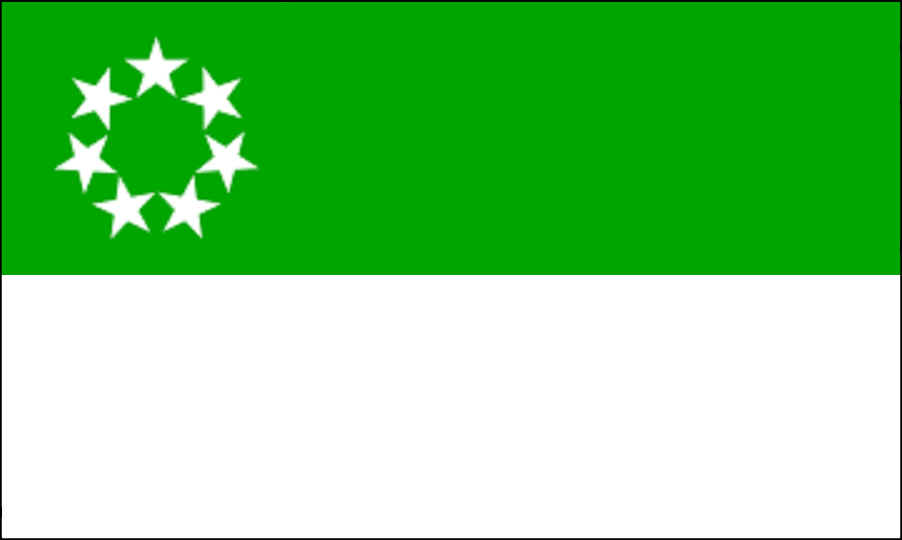Cascadia's Defence Establishment and Armed Forces
The size, nature, and even rationale for the Canadian and American military establishments were worlds apart when the Kingdom of Cascadia gained its independence in 1991. Integrating the two into one organisation that reflects the unique philosophical ethos and constitutional structure of the Kingdom has been the work of more than a decade.
The twin pillars of Cascadia's national defence strategy are externally, a focus on the physical protection of the Kingdom's land and borders, and internally, a decentralised structure that recognizes the sovereignty of the individual Commonwealths.
The first of these pillars has several practical applications. Legislatively, Parliament and the Sovereign have committed the Kingdom to a policy of neutrality, non-interventionism, and the rejection of military adventurism and empire building. Although attempts to make this policy a formal part of the Constitution have not yet been successful, it has nevertheless had many tangible results.
The Cascadian military is prohibited by law from deploying any units outside the borders of the Kingdom for periods longer than 90 days without explicit Parliamentary authorization. Any such authorization cannot itself be for longer than 90 days, although it can be renewed indefinitely. The Cascadian military does not maintain any bases outside the Kingdom, and other nations are prohibited from permanently basing forces within the Kingdom.
The Cascadian Armed Forces do not maintain any instruments of extended power projection, including long-range ballistic missiles (whether land- or submarine-based), long-range bombers, aircraft carriers, or amphibious landing forces. The Kingdom acquired a number of nuclear weapons under the North American Military Forces Allocation Treaty (NAMFAT) of 1993. These have since all been destroyed, as have all stocks of chemical and biological weapons previously stored within the borders of the Kingdom.
The second pillar, decentralisation, is manifested in the command and organisional structures described in the sections below.
Command Structure
Under the Constitution, the Sovereign is the commander in chief of the Cascadian armed forces. As with the Kingdom's other executive functions, policy, doctrine, and day-to-day management is carried out by the Confederation Council, one of the members of which is delegated Minister for the Co-ordination of National Defence. Cascadia's National Defence Establishment (NDE) is headquartered at Fort Royal (formerly Fort Lewis and McChord Air Force Base) in the Commonwealth of Washington.
Armed Services
The Kingdom's defence forces consist of the following:
Cascadian Army
The Army is the Kingdom's principal land-defence force. On the Kingdom level, the Army is a small cadre of professional soldiers. The Militias and National Guards of the various Commonwealths, which form the reserve base of the Army and are amalgamated under unified command in times of war or national emergency, maintain the largest bodies of soldiers.
The Cascadian Army includes the Royal Army Air Corps, which is responsible for providing tactical air support to the ground forces.
Royal Navy
The Royal Navy defends Cascadia from assault from the seas and maintains freedom of the seas and uninterrupted rights of trade and shipping in the waters around Cascadia. By the nature of its duties, the Royal Navy is a more unitary force than the Army, which is drawn mainly from Commonwealth units. However, each of the Commonwealths maintains Naval Guard or Coast Guard organisations, which train and exercise closely with the Royal Navy.
Royal Air Force
The RAF is tasked with defending the Kingdom from air assault, maintaining air superiority over battlefields on which Kingdom forces may be engaged, and transporting defence personnel and materiel by air. As with the other Cascadian armed services, the RAF is closely integrated with the Commonwealths' air national guard units.
Related Service: The Border Security Force
A part of the Ministry of Commerce, the Border Security Force maintains the integrity of the Kingdom's borders, particularly against illegal immigration and smuggling. It also provides land-based security functions at the Kingdom's ports of entry and border crossings and acts as armed support for the Customs Service (also part of the Commerce Ministry) when necessary.
Each of the services has its own procedures and facilities for training recruits. Officer candidates generally receive their degrees from civilian universities, and then attend a two-month all-services Officer Candidates course at Royal Roads Military College in Victoria, British Columbia, before moving on to service-specific training elsewhere.

